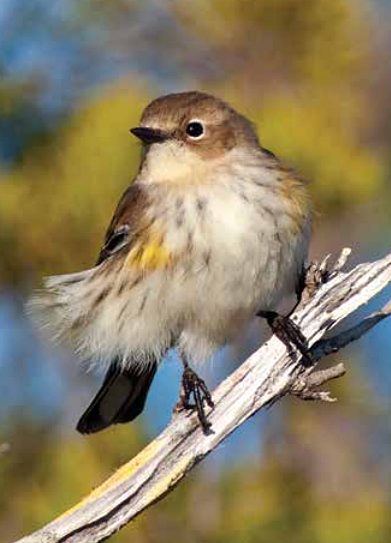When Does a Songbird Migrate? Depends on What It Eats
October 15, 2015
Fall bird migration has fascinated humans for ages. In centuries past, people thought songbirds hitched a ride on the backs of storks. Others thought migratory birds flew all the way to the moon!
Scientists still don’t know all the drivers of fall migration. Studies have shown decreasing daylight to be a cue for many species. New research published by Cornell Lab scientist Frank La Sorte delves into diet as a factor in migration timing. Put simply, what some birds eat seems to determine when they fly south for the winter.
Insectivores: Most species of warblers, vireos, and flycatchers primarily eat insects. And it makes sense that diet drives their population movements. After all, eating insects was an evolutionary reason their ancestors started flying long distances from the tropics to cash in on the protein pulse of the insect hatch in North America. But when insect abundance fades in late summer, these insectivorous birds leave on migration—typically from late August to mid-September.
Omnivores: Birds that eat a balanced diet of insects, fruits, and seeds—such as sparrows—aren’t forced out of their northern breeding grounds because the food supply of bugs runs out. So they have the luxury of waiting for optimal travel conditions (fair skies and a favorable tailwind), which can make for a less dangerous migration than insectivorous birds often encounter. For omnivorous birds, the fall migration window can stretch well into November.
Insectivores-that-become-omnivores: Then there’s a third group of species—including Hermit Thrush, Eastern Phoebe, Yellow-rumped Warbler, and Red-eyed Vireo—that possess the physiological adaptation in their digestive systems to switch from a diet of insects to fruits and seeds in fall. La Sorte’s research, using eBird data and weather radar images of massive flocks of birds, provided the first documented evidence that these insectivores-turned-omnivores migrate on the omnivore’s later schedule, with a migration window that extends into November. That is, these birds enjoy the omnivore’s advantage of waiting for just the right nights for flight.
“Dietary flexibility promotes a more flexible migration strategy,” says La Sorte. “This allows species that are insectivorous during the breeding season to gain additional resources before attempting their autumn migration journey.”
Reference:
La Sorte, F. A., et al. (2015), Migration timing and its determinants for nocturnal migratory birds during autumn migration, Journal of Animal Ecology, 84: 1202–1212.

All About Birds
is a free resource
Available for everyone,
funded by donors like you
American Kestrel by Blair Dudeck / Macaulay Library
